Kanzashi Projects
Kanzashi: A How-To Video
I was honored to have Kanzashi In Bloom exerpted in the October issue of Woman's Day. (Page 28, to be exact.)
They also asked me to make a Kanzashi demo video for their website. It shows the basic flower-making process from start to finish.
Hope you enjoy!
How to Fix a Rumpled Kanzashi
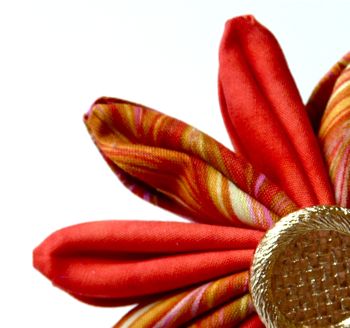
Sometimes, you send someone a Kanzashi and it gets a little bent in the mail. Or, sometimes you'll pack a Kanzashi away for the season, only to find it a bit crushed later.
Not to worry! You can repair a lot of damages with an applique iron!
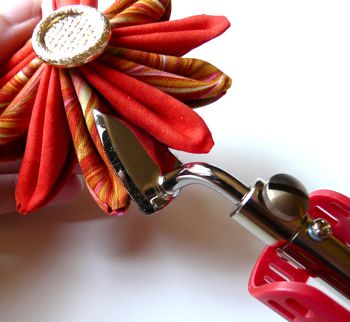
a>Applique irons, also called mini irons, are available at many Jo-Ann stores and quilting shops. They get as hot as a regular iron (so be very careful), but the ironing surface is small and easy to manuver.
You can pass the hot applique iron over and between the petals of your Kanzashi and restore it to its original shape.
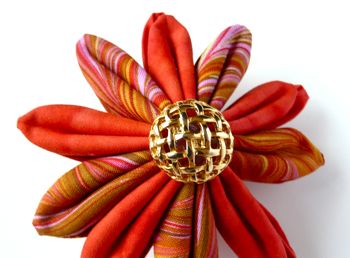
See? Good as new!
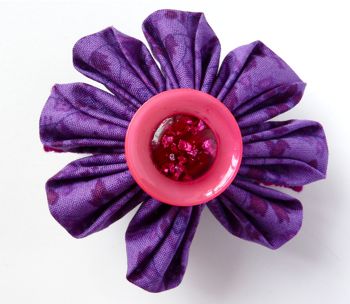
In many cases, you can even use this method to re-orient a petal that's bent out of place, as it has here.
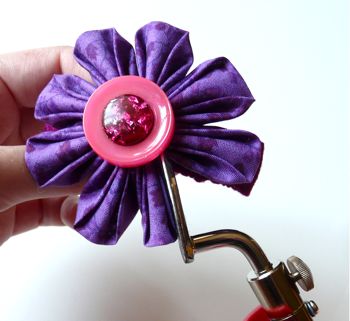
Just gently press the petal back in the right direction with the hot iron. Repeat this as many times as needed.

...And your flower will be back to normal!
Be sure to read the package directions on your applique iron, and use the appropriate setting for the fabric in your flower.
Protecting Kanzashi for Shipping
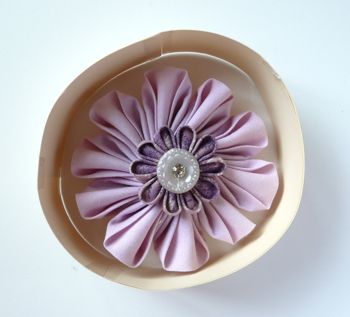
If you want to send a handmade Kanzashi to someone far away, here's a little tip to get it there in perfect shape.
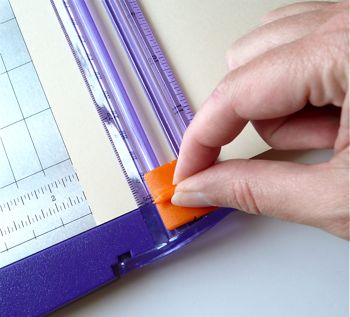
First, cut two 11" long strips of card stock. The width of these strips will depend on how tall your Kanzashi is - make them just a little wider than the height of your flower.

Overlap these two strips about 3"...
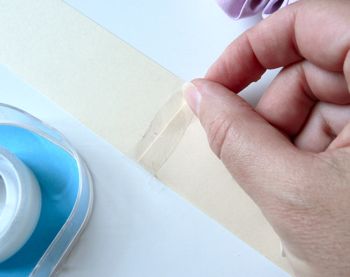
...And tape them together on both sides.
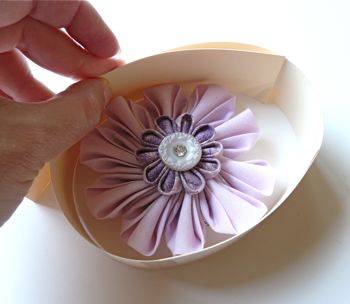
Then, form the strip into a circle, adjusting the size so it's about 1/2" larger in diameter than the flower. (This extra space helps protect the ends of the flower petals from damage.)
Overlap the ends of the strip as much as needed, and tape them in place.

With the card stock ring in place, you can wrap the flower loosely in tissue.
This trick works if you've made a project where your flower is attached to, say, a tote bag or cozy. Just place the ring around the flower, and then wrap the whole item in tissue.
If possible, ship the piece so that the Kanzashi can lay flat.
Kanzashi For All Seasons

One of the many fun things about the flowers in Kanzashi In Bloom is their versatility. Depending on the fabrics you select, and how you accessorize them with buttons and stamens, they can express any season.
Up above there, we have a flower representing Spring in soft pink and green. Next to it, a Summertime flower shines in bright yellow and fuschia.

This warm-toned Autumn flower is capped with a woven leather button. And for Winter, here's a flower in deep, rich hues.
You may even notice that all four of these are made in the same style - with just a few tweaks of the petals here and there to change their shape.
In Japan, Geisha and their apprentices, known as Maiko, often wear specific Kanzashi flowers to represent the seasons of the year. On Wikipedia, you can see a list of traditional Kanzashi designs for each month of the year.
About Kanzashi

The term Kanzashi refers to elaborate hair ornaments worn by women in Japan. They originated around 1600, when hairstyle fashions shifted from a long, straight style to the upswept, ornamented coiffures we're used to seeing in illustrations.
Wikipedia has an interesting article about the various forms of Kanzashi and its long history.

Kanzashi Supplies and Links

Most of the projects in Kanzashi In Bloom don't require special supplies - you should be able to find everything you need at your local Michaels, or AC Moore stores.
But, here are some favorite online sources for supplies:
Fabrics:
New and vintage Japanese textiles for special projects. Beautiful stuff.



